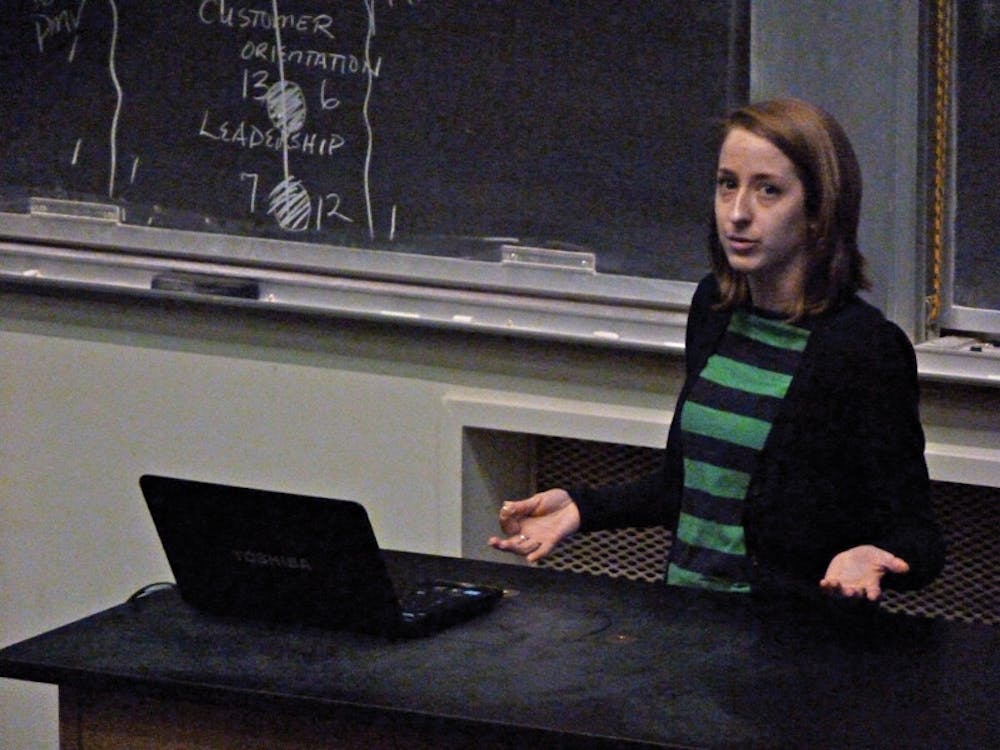HAZMAT suits could have a new look and house contaminants could be better monitored if the research in various University engineering labs yields applicable results. Representatives from the labs presented their work to approximately 30 undergraduates at the inaugural Engineering Undergraduate Research Symposium yesterday.
For engineering students, there are three major pathways after graduation — industry, medical school and research or graduate school,” said Kohana Leuba ’14, one of the event’s organizers. Since existing events present industry and medical opportunities for students interested in those facets of engineering, “we wanted to have some sort of event that would represent the research side,” she said.
At the symposium, engineering graduate student Megan Creighton GS spoke about research being conducted in Professor of Engineering Robert Hurt’s lab, where she works. He has led recent experiments with one-atom thick sheets of graphene — a substance composed entirely of carbon — that reveal that even the smallest atom, helium, cannot pass through the material on its own, she said.
This material has the potential to provide a type of leak-proof lab attire that is less cumbersome to wear than current HAZMAT suits, which can be suffocatingly hot, Creighton said. It could also be used to create containers better at keeping out substances that age food, she added.
Another lab takes its inspiration from photosynthesis and is working to create an artificial process to convert carbon dioxide into the usable fuel fixed carbon, said Andrew Peterson, assistant professor of engineering. Since this process would emit oxygen, it would create an environmentally sound alternative to burning fossil fuels or biomass, he said.
When houses’ foundations crack, vapor from the soil can seep through the floor and have hazardous effects, said Jim Rice, a postdoctoral fellow in Professor of Engineering Eric Suuberg’s lab. His research team has dug into the soil under homes in Rhode Island to determine the concentration of hazardous organic compounds, he said. The team also created models of the paths these contaminants may take to enter peoples’ houses, he said.
Rice said he hopes this research will eventually help the Environmental Protection Agency and other regulators more accurately predict the risk that various underground contaminants pose to homes.
A representative from the bioengineering laboratory presented research on sports and wrist and knee physiology, and a representative from Assistant Professor of Medical Science Eric Darling’s research lab spoke about projects related to adult stem cells.
After each of the presentations, students took out notebooks and pens as researchers gave out their email addresses to undergraduates in the audience who were interested in applying for research positions.
“I want to do research, and I haven’t heard about many labs,” said engineering student Chezev Matthew ’15, adding that she plans to apply to some of the labs she heard about during the symposium.
Leuba said she hopes the symposium will expand next year. “We will probably try to get a more diverse set of researchers, maybe some from civil and mechanical engineering,” she said.

ADVERTISEMENT




